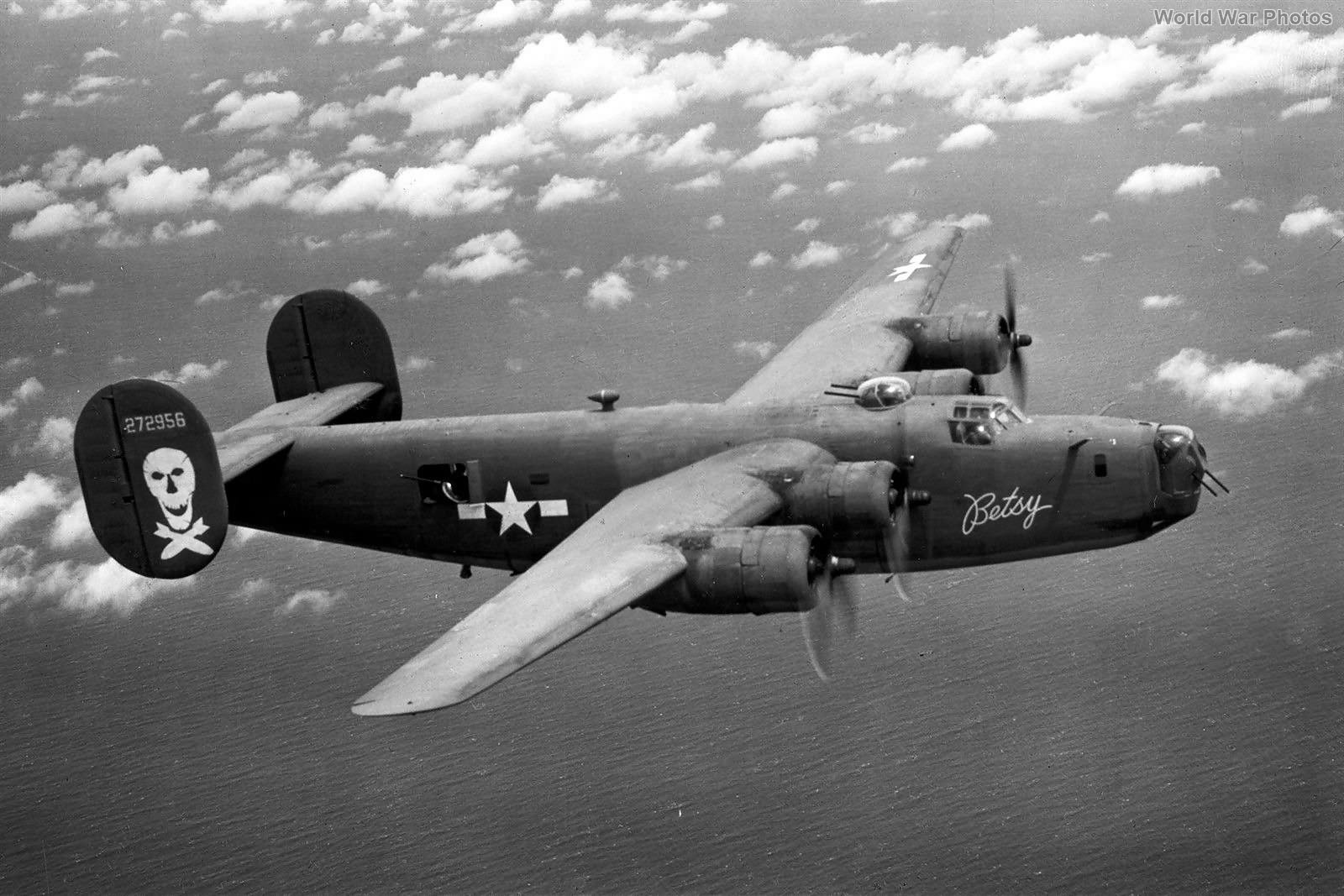The 90th Bomb Group: “Jolly Rogers”
The 90th Bomb Group, nicknamed the “Jolly Rogers”, was a premier American bomb group that played a crucial role in the Pacific War.
Formation and Early Deployment: The 90th BG (Heavy) was constituted on January 28, 1942, and activated on April 15, 1942, at Key Field, Mississippi. After training with B-24Ds at Barksdale Field, Louisiana, and undergoing further training and engineering updates in Ypsilanti, Michigan, the group was deployed to Iron Range, Australia, a remote location chosen for its strategic importance in the Pacific Theater.
Initial Operations: The 90th BG was the first complete B-24 group to reach the Southwest Pacific, initially operating primarily in small formations, often consisting of only two or three bombers. These early missions targeted Japanese positions in New Guinea, the Celebes, and Java. They faced the challenges of operating alone, covering vast distances, and enduring harsh conditions in the Pacific.
Nickname and Distinctive Markings: In July 1943, Lt. Col. Arthur H. Rogers assumed command of the 90th BG. His leadership style, described as demanding but fair, earned the group the nickname “Jolly Rogers”. The group also adopted distinctive markings, including a black background on olive drab tails for their squadrons, which later evolved to a natural metal finish with different tail colors for each squadron.
Notable Operations: Throughout their service, the “Jolly Rogers” participated in several key battles and campaigns, including:
- Battle of the Bismarck Sea (May 1943): They contributed to the Allied victory by attacking Japanese shipping and airfields.
- Attacks on Wewak, New Guinea (September 1943): The group received a Distinguished Unit Citation for strikes against Japanese airfields, enduring heavy flak and fighter opposition.
- Raids on Balikpapan Oil Refineries, Borneo (September and October 1944): They participated in long-range raids targeting vital Japanese oil production facilities, facing fierce resistance from enemy fighters.
Later Deployments and Expansion of B-24 Presence: As the war progressed, the “Jolly Rogers” were deployed to different locations, including Port Moresby, New Guinea, and later to McGuire Field, San Jose, Mindoro, in the Philippines. By this time, the B-24 Liberator presence in the Pacific had expanded, with the 380th BG “Flying Circus” joining the 90th BG at McGuire Field. This marked a shift from the “lone wolf” operations that characterized the early stages of the Pacific War.
Continued Service: The 90th BG continued to operate until the end of the war, eventually moving to Ie Shima to fly alongside the 43rd BG. They played a crucial role in the final air offensive against Japan.
The 90th Bomb Group “Jolly Rogers” was a highly decorated unit that demonstrated courage and resilience throughout the Pacific War. Their distinctive markings, nickname, and impressive operational record solidify their place as a significant contributor to the Allied victory.
